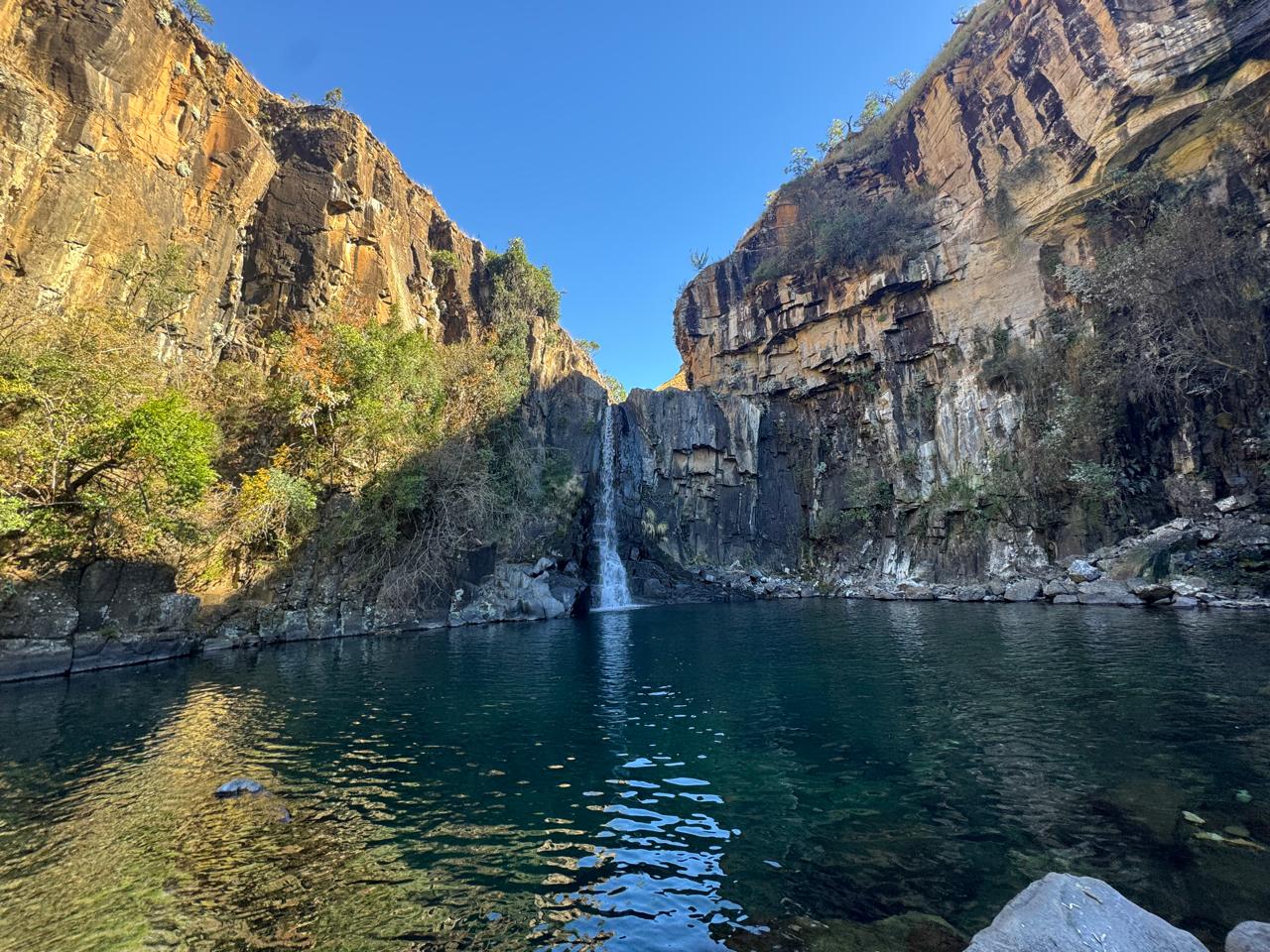How To Smear In The Hills



For those of us who learned to climb on the steep sandstone of the Western Cape, smearing is a foreign affair. Smearing is more associated with vast runout slabs on Spitzkoppe in Namibia; or more locally the faint dimples and waves of granite on Paarl Rock, the scary runouts on Lion’s Head granite or the glistening grey boulders at Llandudno. Smearing is not a skill that most of us Cape climbers have, yet you can learn how to do it. This article is about smearing, and before you go any farther, be warned: I’m not going to talk about rock climbing. This is about smearing your poo! That’s right, ladies and gentlemen – your fecal matter; your feces!
Shall we?
Many years ago, I stepped in human excrement at the base of the Blaze of Glory wall at Silvermine. No matter where we go cragging, whether it’s Spout Cave, Truitjieskraal, Wolfberg, Montagu, Krakadouw, Karbonaatjieskraal, . . . I see the remains of climbers doing their business in the hills. It mostly amounts to soiled toilet paper strewn about the crags, or even on the path. Years, Mary (Eastern Cape) was closed to climbers because the farm owner found used tampons, loads of human feces and toilet paper strewn about water sources near the camping area. It’s gross. And we are all part of the problem. And we can change our outdoor toilet habits and be the solution.
The easiest way is to simply pack out your toilet paper. Don’t burn it. Haven’t you heard the horror story about the guy who burned down Krakadouw many years back with a match to his toilet paper? I didn’t have the misfortune of witnessing that debacle, but early in 2003, we went out to Krakadouw twice - just after a major fire. It was devastating. We get fires all the time in the Western Cape during summer. Perhaps some fires are actually natural despite us throwing shade on a bergie. What if it was a climber or hiker or walker burning their bog roll paper again? Why take the risk? It’s easy to pack out your used paper. It’s not that gross, either, once you make a plan, craft a habit and get used to it.
Here’s what we do – and we’ve been doing this for decades. Get two Ziploc plastic bags, one big one, and one sammie-sized or medium-size bag. Put the smaller bag and your favourite 2-ply into the larger bag. Aside: I really dislike 1-ply and 3-ply and wipe the Middle Path. And bring along some hand sanitiser. Come on. It’s post-covid. Everyone’s got one. You’ve got one, too. Bring it along.
Ok. After you take a dump, carefully stash the used sheets into the smaller ziplock bag. You may want to pay attention to how you fold it to put it in. Close that tight (without any air inside), and put it in the larger ziplock along with the bog roll and sanitiser. Simply zip both bags shut. The used paper doesn’t dirty the clean roll, and it doesn’t smell either.Just throw it into the rubbish bin at the garage on the way home, or just empty the small bag into a toilet and reuse the bag (don’t forget to reseal it). You will find you can adjust your wiping style, including folding of the toilet paper before and after, to make this a clean and easy way to keep the crags free of toilet paper.
A slightly more advance method to clean up at the crags is going to be challenging for most of us. I’m talking about the smear. I admit, this activity can appear a bit gross at first. Truth is, it always looks like shit. But it can be fun, too! I learned this technique from two Canadian climbing guides near the Austrian Hut on Mt. Kenya. We were camping in the rocks above the Curling Pond and Lewis Glacier because the hut was disgusting.So were most of the spots around our respective camping areas. Like a lot of the climbing in SA and around the world, Mt. Kenya is pretty much a desert.Excrement takes a long time to decompose there. This happens in all deserts, especially when you bury your chocolate puff adders beneath a rock or sand. It just cannot decompose quickly when there’s not enough moisture in the soil. So what did these smart Canadians do on Mt. Kenya? They smeared their crap on the rocks with the most sun exposure. A couple hours later, the remains were completely dried up. In several days, it was virtually gone.
What’s with thoseCanadians, eh?
So, let’s discuss the mechanics of this rather gruesome topic. You can easily smear your fresh dung with a brick-sized rock. Squat over a flat or slightly sloping exposed rock that gets a lot of sun. Do you business(aiming downhill), and then smear. You avoid soiling your hand by grabbing one end of the rock, and smearing in one direction. When done with the smear, turn the rock over to the side to expose that portion, too, to the sun, wind and elements.
Then do the double bag and hand sanitiser hack, and walkaway and let nature work its wonders of biodegradation. On many of our climbing trips, I purposefully revisit a dump scene from a prior visit; sometimes days, sometimes weeks. The smearing always completely accomplished its objective. I’ve performed this exercise at Wolfberg, Powerlines at Rocklands, LowerButtresses, The Ledge, Truitjies and I’ve got pictures to prove it! I admit, those pictures might gross you out more than you are already reading this. I also admit I like taking those pictures! It’s scientific data collection and analysis! The end result is clear: the sun, wind and rain completely disperse the remains of our smearing so much faster than other less interventionist methods. No slow decaying holes, no toilet paper. Just clean, unspoiled rock very soon again.
The crags of the Western Cape, much of South Africa andNamibia are in desert and semi-desert areas. These two simple measures, packing out your toilet paper and smearing in the hills, will go a long way to preserve the natural beauty of our climbing destinations. It’s amazing what two Ziploc bags, a rock and a non-squeamish smear campaign can accomplish. And because we are blessed with so much wind, rain and sun, we are also blessed with quick dispersion of our smeared remains. Pack out the paper people, and learn how to smear in the hills.
Sidebar/visual 1: Packing out the Paper
- You need two Ziploc bags – one freezer size, one smaller size.
- Put your toilet paper and the smaller bag inside the big one. A full roll of toilet paper is much too bulky – take a partially used one from your bathroom, or just roll off a good amount around your hand to avoid the bulk of the cardboard roller. Hack: I often do bring it with the cardboard, and stick the sanitiser inside to protect it from leaking.
- The idea is this: stick the used toilet paper in the small baggie, and Ziploc it shut. The small baggie keeps the inside of the big baggie and the unused toilet paper clean.
- The technique for wiping is as follows:
- Stay squatting
- Roll a few sheets around two fingers of one hand
- Wipe in one direction (e.g. back to front or vice versa) with one swipe
- Fold the paper over itself so as to conceal the skidmark
- Shove that in the small baggie
- Repeat until clean (or you run out of bog roll!)
- Hack: for better performance, and fewer dingleberries, use water like most of the planet does, finish with the bogroll and then sanitise at the end.
- Before sealing the small Ziploc, gently squeeze out the air inside
- There’s actually no need to zip up the big bag, as the rough stuff is inside the small locked baggie. Plus, it’s easier to rollup the big bag when it’s not locked shut.
- You can recycle the small baggie by emptying the small baggie in a toilet, then reseal it for the next trip; or you can just toss the small baggie in the rubbish bin.
Sidebar/visual 2: Wielding the Smearing Stone
- As you scout out a flat surface that sees a lot of sun, look for a brick sized stone along the way – the more rectangular the better. It must have a flat surface on the smearing side, and enough length to hold it without exposing fingers to . . . you know.
- When it’s time to smear, grab the stone on the top and to one side. Use the other side’s flat bottom to smear across in a wide arc.
- You may have to smear a couple more times (depending on what you ate the day before) – always go in the same direction to get the best flattening action.
- When you’re done, just turn the stone over to leave the smear-side exposed as well.
- Note that if you are really in a rush, you can always find a smearing stone after nature’s call.
That’s all y’all. It really is that easy. And if you go back even a few hours or a day later, you will see with your own eye show fast nature does it’s thing.
--------
Note this may have been published in a slightly different form on climb.co.za





















